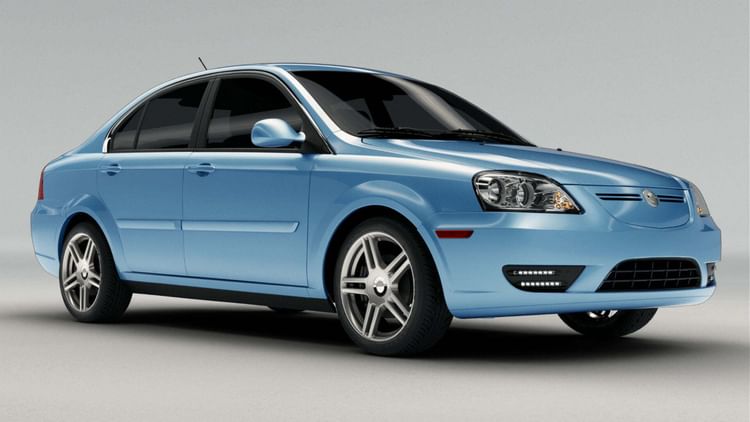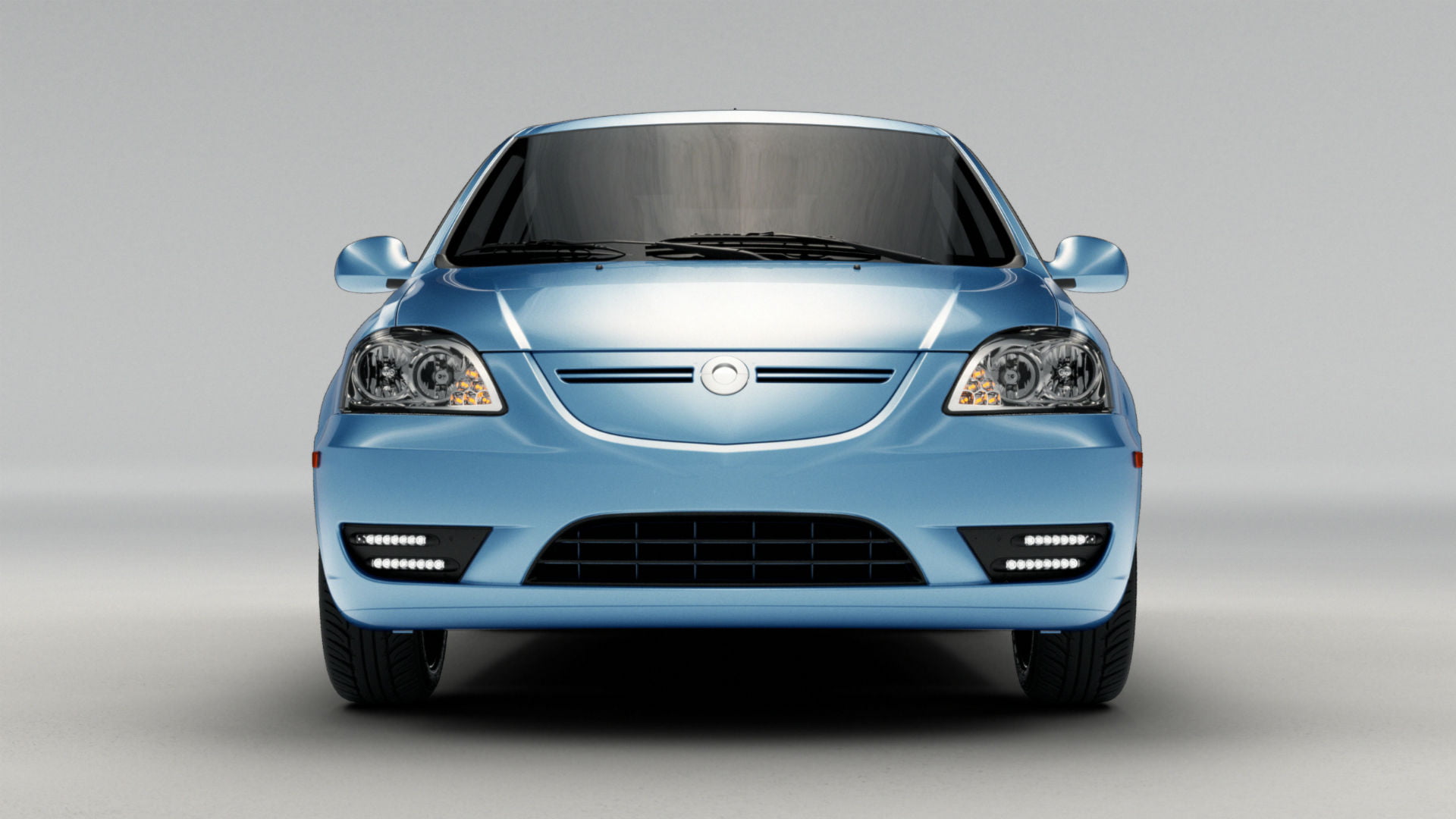Woulda, shoulda, Coda: The rise and fall of an EV

Full disclosure: This is a blog about the Coda electric car. To save you the pain of reading 1,000 words, skip to the end to find out why it's on PetrolBlog.
Ten years ago, a tech upstart from California was threatening to upset the establishment with the launch of a new electric car. Using e-commerce as a new sales model, it hoped to conquer North America, China and Europe.
No, not Tesla, but Coda Automotive.
Along with Fisker, the three EV pioneers were destined to become the holy trinity of all-American, all-electric propulsion. A decade on, Coda is little more than a footnote in the history of the EV. Which kinda makes PetrolBlog sad.
In June 2009 – a full three years before the first deliveries of the Tesla Model S – Coda’s eponymous electric vehicle was taking its first tentative steps in the world. Launched via a webinar – because that’s what tech upstarts do – the first external test drives were conducted just a few weeks later.
California dreamin’

Coda hoped to launch the first production version by autumn 2010, with sales exclusively in California. By 2011, it aimed to be producing around 20,000 vehicles a year.
The fact that it would be March 2012 before the first Coda rolled off the line in Northern California should come as no surprise: electric car production involves a steep learning curve, even with support from some big automotive names and the use of an existing platform.
Initial assembly of the glider chassis and lithium-ion battery pack was conducted in China, with research, development, sales and marketing conducted at Coda HQ in Los Angeles. If the styling looks dated now, think what it must have looked like at the turn of the decade.

It was based on the Pininfarina-designed Hafei Saibao four-door saloon, which itself was based on the chassis of a Mitsubishi Lancer from the late 90s. To PetrolBlog’s eyes, it’s one of the most desirable looking EVs ever built, but in the real world, critics were less enamoured.
“A really ugly car”, slammed Business Insider in Australia. “Generic”, wrote the New York Times. Popular Mechanics said the “bland looks” had the whiff of Subaru’s ‘Mediocrity’ car, as if this is a bad thing…
“This is a bland car, but intentionally so. It's aimed right at [the] heart of the masses. It's the anti-Tesla,” said Jay Yarow in 2009. That’s about the crux of it.
Is it so bland? Today, much like the C88 Porsche, it has a unique retro appeal, like an eco pioneer that was years ahead of its time. Some credit must go to the Porsche Design Studio for giving the Chinese saloon a light touch makeover.
Inside, the cabin could be best described as inoffensive and conventional. Had the Coda arrived in 1999, it would have looked of its time. In 2012, it looked light years away from what was going at Tesla or Fisker.

Take the steering wheel, which looked suspiciously like a wheel you’d expect to find in a clip art transportation package. Even the Proton Impian featured a more desirable wheel, especially in leather and wood grain trim.
Standard spec included tasteful 17-inch alloys, air conditioning, iPod connectivity and a seven-inch Alpine touchscreen. The Jaguar-style drive-selector sat between the front seats.
The Coda’s 31kWh battery could deliver an American EPA-rated 88 miles of range, which was 15 more than the Nissan Leaf and 12 more than the Ford Focus Electric. At $37,250 (£28,800) before incentives, it was priced somewhere between the two.
A full charge would take six hours using a 220-volt charger, with 40 to 50 miles available within a couple of hours. Small numbers in 2019, but perfectly acceptable in 2012. The 0-60mph time could be achieved in 9.5 seconds, before the Coda maxed out at 85mph.
Boulevard of broken dreams

To highlight the company’s ambition and optimism, the battery came with a 10-year/100,000-mile warranty. In April 2012, Coda secured a partnership with Great Wall “to deliver the most affordable EV on the market, comparable to entry-level internal combustion engine vehicles.”
After California, Coda would conquer the rest of North America, before venturing into China and Europe. Riding on the PR coattails of Tesla, Coda could corner the affordable end of the market, leaving Tesla to dominate the premium end.
But it wasn’t to be. Within a year, the Coda dream was over, with the company filing for bankruptcy in May 2013. Just 117 cars found a home, with ‘free electricity’ and free wall-charger deals failing to secure enough early adopters.
The company wasn’t short of investment, raising $300 million in equity from backers, but withdrawing a request or $334 million in federal loans in 2012. It hoped to secure $150 million in private funding in the same year, but managed to find just $22 million.

Not that this was the end of the story. The Coda re-emerged as the Mullen 700e at the 2014 Auto Show, with Mullen Technologies hoping the EV would rise like a phoenix from the ashes of bankruptcy.
At the time of writing, there are 40 Coda ‘Classic’ electric cars available, each one marketed as a “brand new 2013 Coda EV sedan”. For a little shy of $13,000 (£10,000), each car comes with a one-year or 12,000-mile drivetrain warranty. Do you feel lucky?
The difference between Tesla and Coda is stark, but you have to wonder what might have been. Was the ‘anti-Tesla’ approach too cautious in a segment that thrives on cutting-edge cool and next-gen technology? You couldn't see Coda launching a Cybertruck or sending a car into space.
Truth be told, the reason the Coda is gracing the pages of PetrolBlog is the styling. Flicking through the pages of an automotive image library, the Coda EV stood out like a… well, like a Chinese saloon in a Walmart parking lot.
Haters gonna hate, but the Coda’s Chevrolet Lacetti tribute act styling tick all of the boxes at PBHQ. Who wouldn’t want an electric Lacetti for thirteen-thousands bucks? That’s a rhetorical question.
Right now, aside from the Renault Fluence, PetrolBlog can think of no other electric car it would like as part of the fleet. Does that make PB a little odd? Maybe, but then you knew that already, didn’t you?
If you've skipped the words, the Coda electric car is here because it gives PetrolBlog the fizz. The words are little more than a thinly-disguised attempt to justify its inclusion on the blog. Even the simple act of resizing the images makes PB giddy with excitement. You can send in the men in white coats now...





